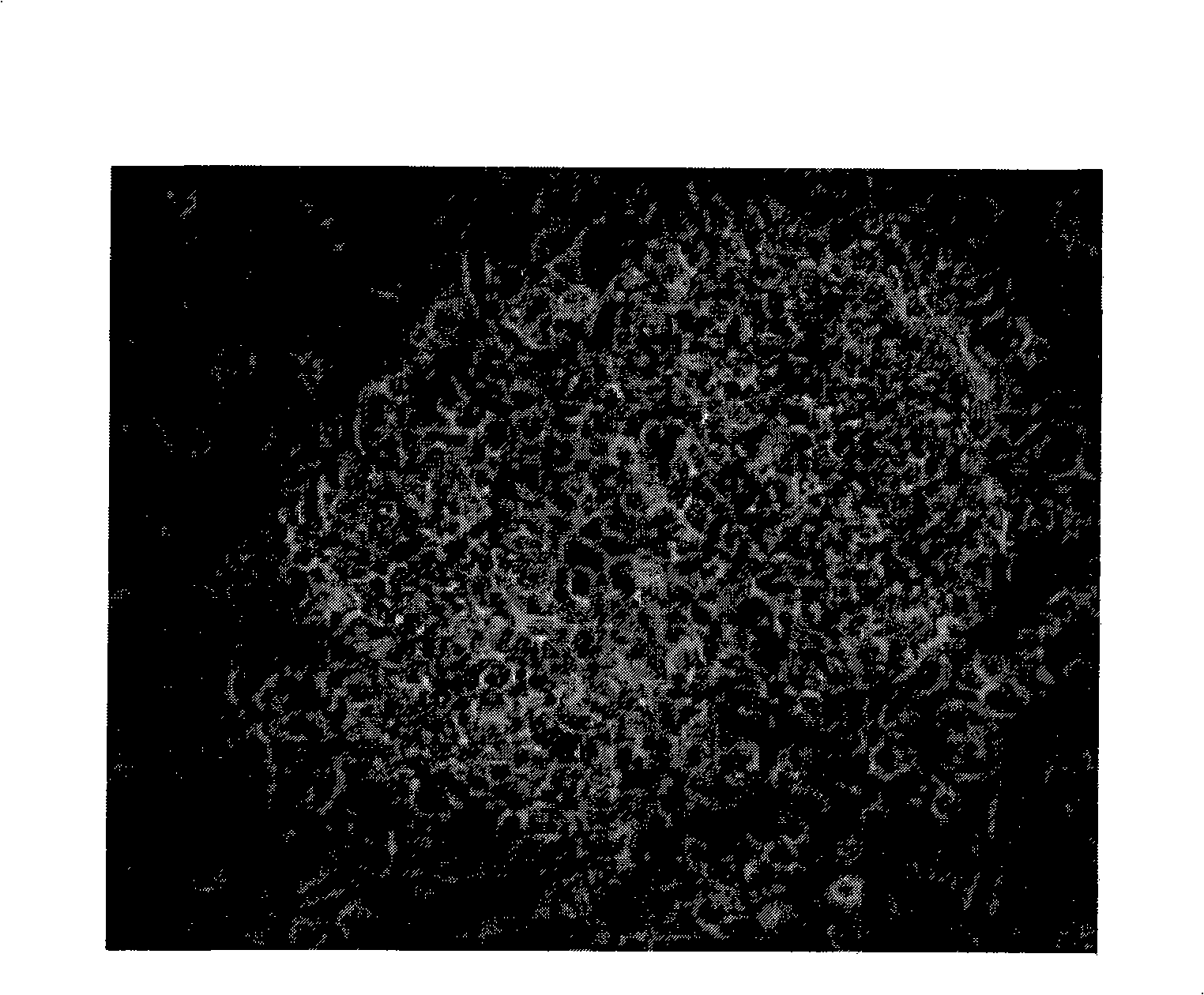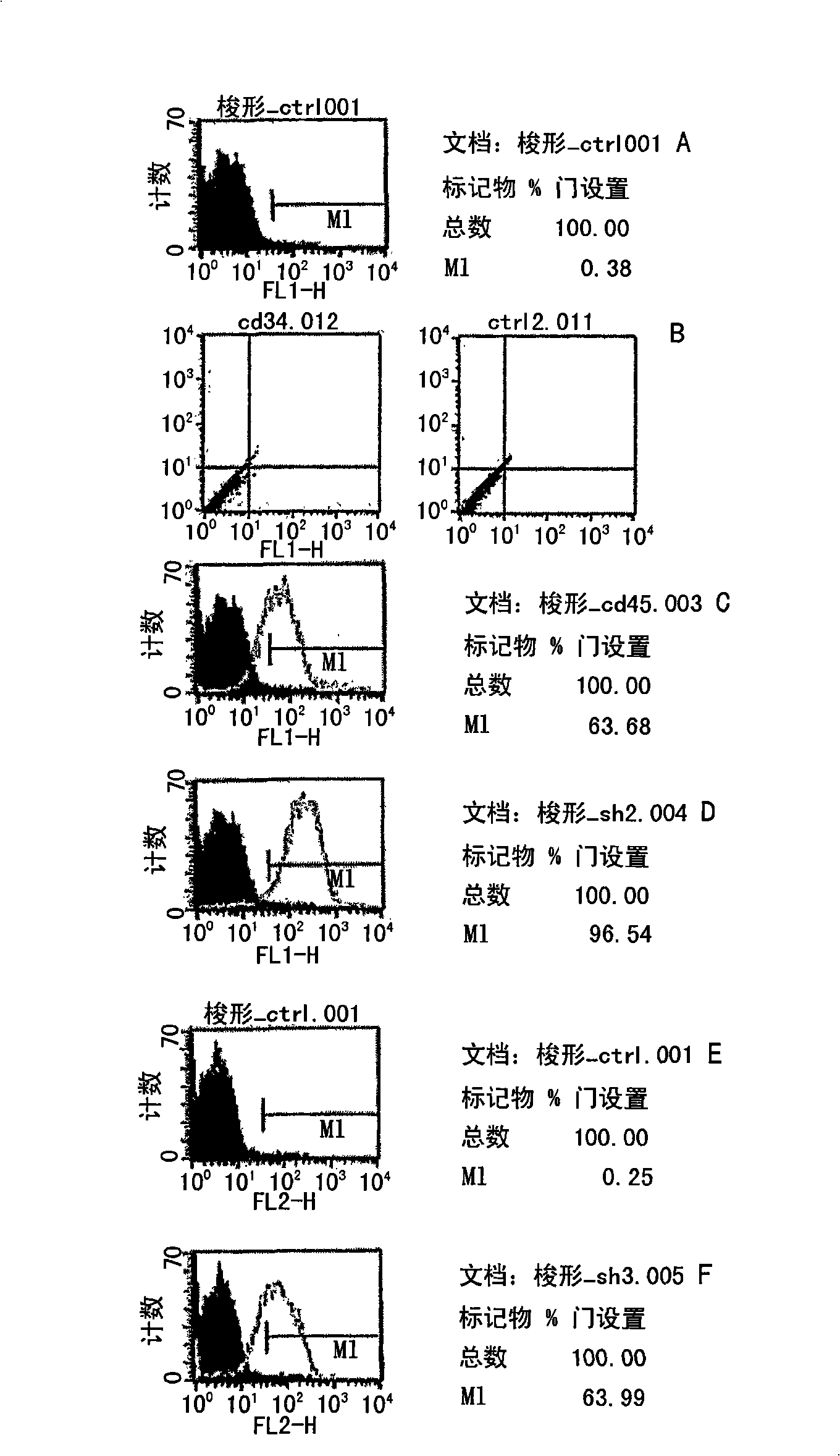Multipotent adult stem cells having an ability of Oct4 expression derived from umbilical cord blood and method for preparing the same
A technology of adult stem cells and umbilical cord blood, applied in non-embryonic pluripotent stem cells, artificially induced pluripotent cells, biochemical equipment and methods, etc.
- Summary
- Abstract
- Description
- Claims
- Application Information
AI Technical Summary
Problems solved by technology
Method used
Image
Examples
Embodiment 1
[0046] Example 1: Isolation of adult stem cells from umbilical cord blood
[0047] Cord blood was collected from full-term prenatal newborns at Seoul National University Hospital and Samsung Cheil Hospital according to the Institutional Review Board guidelines.
[0048] Dilute 70-100 ml of the collected cord blood sample in PBS at a ratio of 1:1 and stir. Then, the blood sample was separated on Ficoll at a ratio of 15:25, where the blood sample (diluted 1:1 in PBS) was slowly spilled onto 15 ml of Ficoll solution to cause layering, followed by centrifugation at 2500 rpm for 20 min . After centrifugation, three different layers were formed from the bottom. Among the three layers, the buffy coat (middle layer: mononuclear cell layer) was aspirated with a pipette and washed three times with HBSS, followed by centrifugation at 1800 rpm for 15 minutes. The upper layer was completely removed from the centrifugate and the pellet was stored on ice.
[0049] The precipitate was shak...
Embodiment 2
[0052] Example 2: Immune properties of pluripotent adult stem cells from umbilical cord blood
[0053] In order to examine the immune properties of the umbilical cord blood-derived pluripotent adult stem cells obtained in Example 1, the expression patterns of cell surface antigens were analyzed. For this purpose, the 2×10 cultured in Example 1 6 -10 7 The cells were washed with PBS and incubated with their corresponding antibodies at room temperature. Antigen expression and non-expression were analyzed by flow cytometry. Furthermore, PAS staining (Herperiodic acid staining method) was performed.
[0054] results, such as Figure 4 As shown, the pluripotent adult stem cells from umbilical cord blood of the present invention showed 63.38%, 96.54% and 63.99% positive responses to CD45, SH-2 and SH-3, respectively, and more than 90% negative responses to CD34. Moreover, the immunophenotype of other antigens was analyzed. As a result, the immune characteristics of pluripotent ...
Embodiment 3
[0056] Example 3: Differentiation of pluripotent adult stem cells from umbilical cord blood into osteoblasts
[0057] The pluripotent adult stem cell culture solution from umbilical cord blood obtained in Example 1 was mixed with 1 ml of osteoblast induction medium (0.1 μmol / L dexamethasone (Sigma, USA), 0.05 mmol / L ascorbic acid-2-phosphate (Sigma , USA), 10 mmol / L β-glycerol phosphate (Sigma), and 5-30% human serum or plasma), and the cells were counted. Then, the cells were cultured in flasks (5% CO 2 ; 37°C; the medium was replaced every 3-4 days) to induce pluripotent adult stem cells to differentiate into osteoblasts. Fourteen days after the start of culture, the differentiation of pluripotent adult stem cells from umbilical cord blood into osteoblasts was confirmed by Von-Kassa staining (see Figure 4 ).
PUM
 Login to View More
Login to View More Abstract
Description
Claims
Application Information
 Login to View More
Login to View More - R&D
- Intellectual Property
- Life Sciences
- Materials
- Tech Scout
- Unparalleled Data Quality
- Higher Quality Content
- 60% Fewer Hallucinations
Browse by: Latest US Patents, China's latest patents, Technical Efficacy Thesaurus, Application Domain, Technology Topic, Popular Technical Reports.
© 2025 PatSnap. All rights reserved.Legal|Privacy policy|Modern Slavery Act Transparency Statement|Sitemap|About US| Contact US: help@patsnap.com



